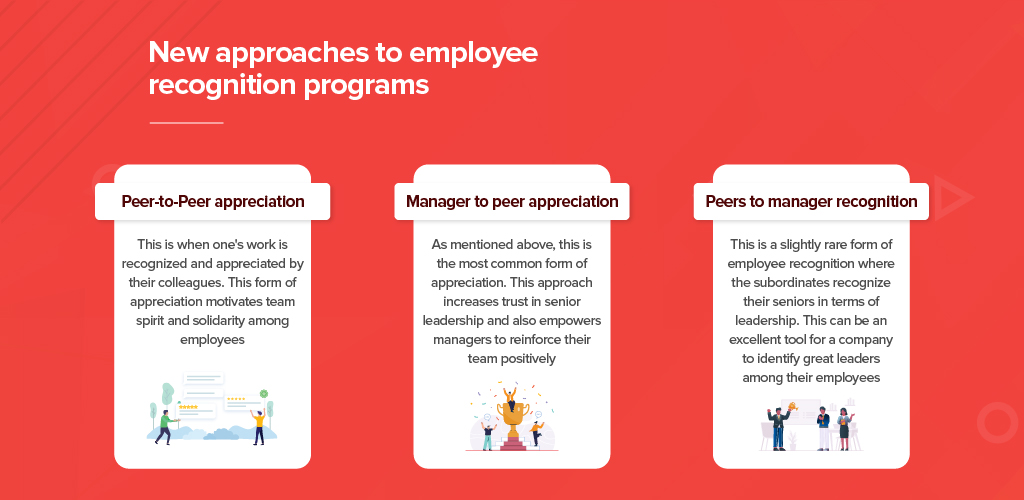What Is Employee Recognition?
Gone are the days when a job only meant financial security; today, a job is a part of one’s identity. While a salary at the end of the month is what we work for, the feeling of playing an important role in the company and getting appreciated for it can be the reason to walk the extra mile. It has been agreed by several leading business personalities that a motivated team is the most crucial factor behind the success of an enterprise. Hence, it becomes critical that an enterprise doesn’t only recruit the best human resource but also keep employees motivated with well-planned reward and recognition programs. Employee recognition programs help the company identify employees with outstanding performance and devise a reward strategy that increases the team’s performance and employee retention.
What Does Employee Recognition Do?
Human resource attrition is a significant concern for all companies today. Employee rewards and recognition programs make the employee feel valued and appreciated. This, in turn, results in higher loyalty and motivation. It has been found that companies that follow a reward strategy have 31% less attrition than those without any employee rewards strategy. Moreover, companies with higher employee motivation are 12 times more likely to have a better business outcome. A research conducted on employee engagement revealed that 68 % of employees believed that leaders could engage and connect better with employees with an employee recognition program.
The following are some great benefits of having an employee recognition program:
- Increased team performance and productivity
- Increased Employee Engagement
- Lower voluntary turnovers
- Improves employee wellbeing and perception
- Creates positive work culture
- Decreased workplace stress and absenteeism
Who Can Recognize Whom?
In the past, there was only a top-down approach in terms of employees’ recognition. It was a one-way process where only superiors rewarded subordinates. However, now the employee motivation process has become much more evolved, and there are several different approaches to employee recognition. The following are some general approaches to employee recognition programs:
Peer-to-Peer appreciation: This is when one’s work is recognized and appreciated by their colleagues. This form of appreciation motivates team spirit and solidarity among employees. This also has a notable positive impact on the work atmosphere.
Manager to peer appreciation: As mentioned above, this is the most common form of appreciation. This approach increases trust in senior leadership and also empowers managers to reinforce their team positively.
Peers to manager recognition: This is a slightly rare form of employee recognition where the subordinates recognize their seniors in terms of leadership. This can be an excellent tool for a company to identify great leaders among their employees and retain them for a longer time.

What Behaviors Warrant Recognition?
The criteria for employee recognition can vary according to the company’s core values and goals. A reward is a great way to positively reinforce employees and motivate them to achieve the desired behavior. This can be behavior-oriented, where you reward an employee for a set of behavioral qualities like punctuality, teamwork, ownership or loyalty. Alternatively, the rewards can also be task-oriented, for example, rewarding employees for achieving specific goals like sales targets, project completion, etc. The above-mentioned praise-worthy instances are collectively called recognition occasions. It is imperative that a company identifies these occasions and creates a point value-based recognition system to motivate employees to achieve the maximum desired goal.
What is the recommended point value?
As discussed above, there can be several recognition occasions in a work ecosystem. It can be as important as achieving sales targets and simple as an employee’s birthday or work anniversary. It is important that a company assigns some value points to each recognition occasion and rewards the employees based on these point values. The point value equivalent to each occasion should vary according to the importance of the occasion. A transparent point value system is fundamental to motivating and propelling the employees in the right direction.
How effective are employee recognition programs?
The effectiveness of the company’s employee recognition program depends primarily on how specific, timely, and measurable the value points are. When you have the proper recognition program, your employees feel more valued, and it has a significant impact on the company’s productivity and work atmosphere.
To sum it up, it is crucial for a company to identify its core values and targets before creating a point-based employee rewards program. Moreover, it is also vital that rewards are disbursed in a timely and standardized manner so that no employees feel less valued. Zaggle Propel is a revolutionary employee rewards platform that helps a company execute a well-planned employee recognition program. Zaggle Propel makes employee recognition effective and calculable so that companies can gain higher productivity and ROI from their rewards strategy.
Sign up for a free demo today to craft an excellent employee recognition program for your company.


